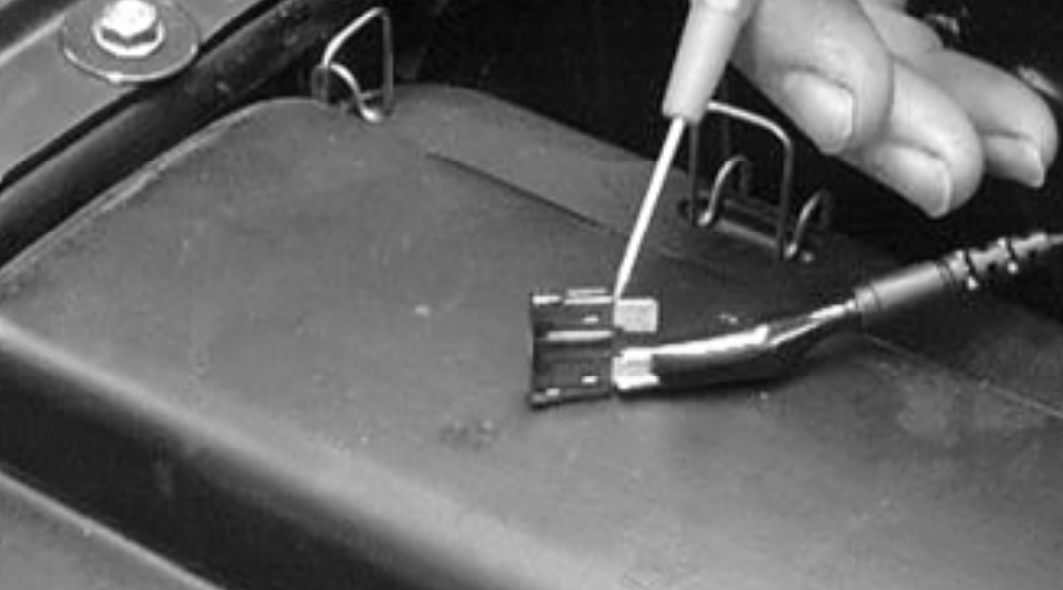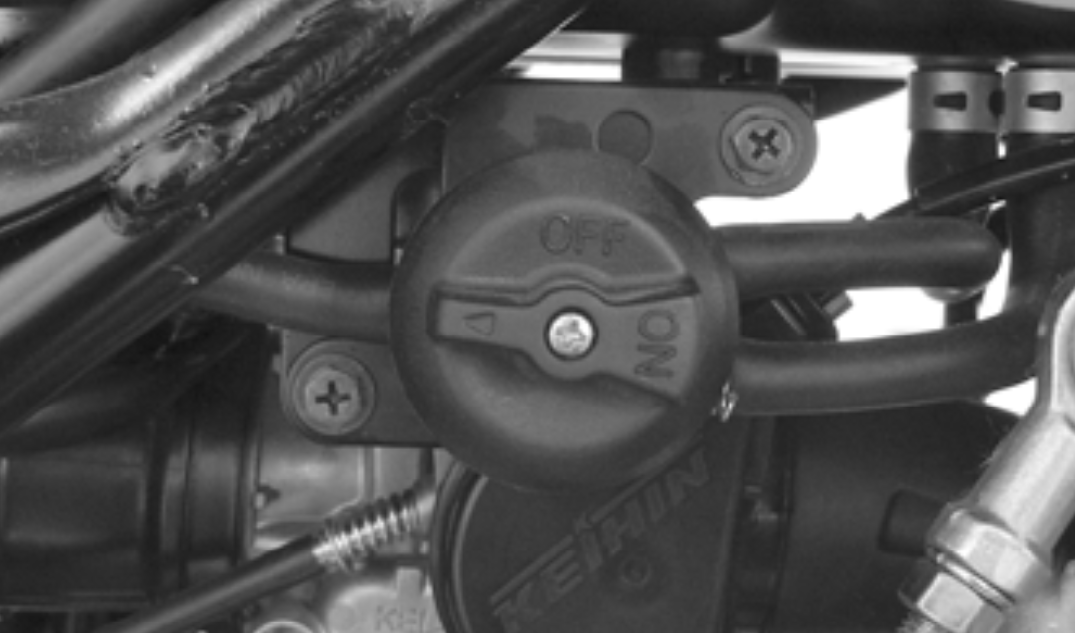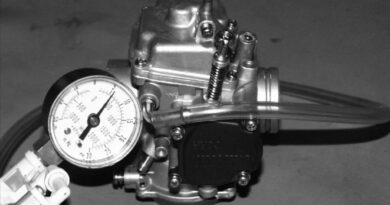Troubleshooting Guide: Why Your ATV Won’t Start
[toc]
Introduction
There’s nothing quite like the thrill of hitting the trails on your all-terrain vehicle (ATV). But what happens when that excitement is abruptly interrupted by a stubborn engine that just won’t start? Before you start to worry, it’s essential to understand that ATV starting problems are not uncommon, and many issues can be resolved with some troubleshooting and a little know-how. In this comprehensive guide, we’ll explore the common reasons why your ATV won’t start and provide practical solutions to get you back on the trail in no time.

Fuel System Issues
The fuel system of your ATV plays a pivotal role in its overall performance, and it’s a common source of starting problems.
Empty Fuel Tank
Sometimes, the simplest explanation is the right one. Ensure your ATV has an adequate amount of fuel. Running out of fuel is a common oversight, especially if your fuel gauge is not functioning correctly.
Fuel Quality
The quality of the fuel you use can greatly impact your ATV’s performance. Stale or contaminated fuel can clog your ATV’s fuel system, resulting in starting problems. Drain the old fuel from the tank and the carburetor, clean the fuel lines, and use fresh, high-quality gasoline.
Clogged Carburetor
Over time, the carburetor can become clogged with debris, sediment, or varnish buildup. A clogged carburetor can restrict the flow of fuel to the engine, causing starting issues. Cleaning or rebuilding the carburetor may be necessary. Here are the steps to clean a carburetor:
a. Remove the carburetor from the ATV.
b. Disassemble the carburetor carefully, taking note of the placement of gaskets and components.
c. Clean the carburetor thoroughly with carburetor cleaner or a similar solvent.
d. Inspect and clean the jets, needle, and float valve.
e. Reassemble the carburetor and reinstall it on the ATV.
Fuel Pump Problems
Some ATVs are equipped with fuel pumps to assist in fuel delivery. If your ATV has a fuel pump, it’s important to ensure that it’s functioning correctly. A malfunctioning fuel pump can lead to inadequate fuel delivery, resulting in starting issues. Test the fuel pump’s pressure and flow rate according to your ATV’s specifications. Replace the fuel pump if it fails these tests.

Electrical Problems
Electrical issues are another common cause of ATV starting problems. Your ATV relies on a robust electrical system to ignite the engine, and any faults can disrupt the starting process.
Dead Battery
A dead or weak battery is a frequent culprit for starting problems. To check your battery’s voltage, use a multimeter. If the voltage is below the recommended level, recharge or replace the battery. Properly maintaining your battery by keeping it charged during periods of inactivity can help prevent starting issues.
Faulty Starter Solenoid
The starter solenoid is responsible for transmitting power from the battery to the starter motor. A malfunctioning solenoid can prevent the starter motor from receiving adequate power. To test the starter solenoid:
a. Use a multimeter to check for continuity between the solenoid’s terminals when the ignition switch is turned to the “start” position.
b. If there’s no continuity, the solenoid is faulty and should be replaced.
Faulty Spark Plug
A worn or fouled spark plug can result in weak or no spark, making it challenging to start your ATV. As part of your regular maintenance routine, replace the spark plug as needed. Consult your ATV’s manual for the recommended spark plug type and gap.
Wiring and Connections
Inspect the wiring and electrical connections on your ATV for signs of damage, corrosion, or loose connections. Faulty wiring or poor connections can disrupt the flow of electricity, leading to starting problems. Be sure to check the following:
a. Battery connections: Ensure that the battery terminals are clean and tightly connected. Corroded terminals can hinder electrical flow.
b. Ground connections: Check the grounding points on your ATV and make sure they are clean and securely connected.
c. Wiring harness: Examine the wiring harness for visible damage, such as frayed wires or exposed conductors. Replace or repair any damaged wiring.
d. Ignition system: Inspect the ignition switch, key, and wiring associated with the ignition system. Ensure that all connections are intact and functioning correctly.

Ignition System Problems
The ignition system is responsible for creating a spark that ignites the fuel-air mixture in the engine’s combustion chamber. If there are issues within the ignition system, your ATV may not start.
Ignition Switch
The ignition switch plays a crucial role in completing the electrical circuit necessary for starting your ATV. A faulty ignition switch can disrupt this circuit, preventing the ATV from starting. To test the ignition switch:
a. Use a multimeter to check for continuity between the switch’s terminals in the “on” and “start” positions.
b. If there’s no continuity, the ignition switch is faulty and should be replaced.
Ignition Coil Issues
The ignition coil is responsible for generating the high-voltage spark that ignites the air-fuel mixture. If the ignition coil is faulty, your ATV may not start or may experience weak or irregular sparks. Testing the ignition coil’s resistance with a multimeter can help determine if it’s functioning correctly. Consult your ATV’s manual for the specific resistance values.
CDI Unit Problems
The CDI (Capacitor Discharge Ignition) unit controls the timing of the spark and is critical for proper ignition. A malfunctioning CDI unit can result in starting issues. To diagnose CDI unit problems, consult your ATV’s manual for specific testing procedures. Replacing a faulty CDI unit is the solution if it fails the tests.

Engine Mechanical Issues
The engine’s mechanical components can also contribute to starting problems. It’s essential to ensure that the engine’s internal parts are in good condition.
Compression Issues
Adequate compression in the engine’s cylinders is vital for the starting process. Low compression can prevent your ATV from starting or result in poor performance. To diagnose compression issues:
a. Use a compression gauge to measure the compression in each cylinder.
b. Compare the readings to your ATV’s specifications.
c. If the compression is below the recommended level, you may have worn piston rings, damaged valves, or other internal engine problems that require attention.
Valve Adjustment
Proper valve clearance is crucial for the engine’s performance. Incorrect valve clearances can lead to starting problems and poor engine operation. Consult your ATV’s manual for the recommended valve clearance specifications and adjust the valves accordingly.
Timing Chain/Belt Problems
The timing chain or belt ensures that the engine’s valves open and close at the correct times. If the timing chain or belt has slipped or is damaged, it can disrupt the engine’s timing, resulting in starting problems. Inspect the timing chain or belt for wear, damage, or slack, and replace it if necessary.

Fuel Delivery Issues
The fuel delivery system plays a pivotal role in providing the engine with the correct amount of fuel-air mixture for combustion. Issues in this system can lead to starting problems.
Dirty Air Filter
A clogged air filter restricts airflow to the engine, resulting in a rich fuel-air mixture. This can make starting difficult and lead to poor engine performance. Clean or replace the air filter regularly to ensure optimal airflow.
Clogged Fuel Filter
The fuel filter is responsible for trapping debris and contaminants before they reach the engine. A clogged fuel filter can restrict fuel flow, causing starting problems. Replace the fuel filter as part of your regular maintenance routine to prevent this issue.

Safety Interlocks
Many modern ATVs are equipped with safety interlocks that prevent the ATV from starting under certain conditions. These interlocks are designed to enhance rider safety. However, they can occasionally lead to starting issues if not engaged correctly.
Brake Lever and Safety Switch
The brake lever safety switch ensures that the brake is engaged before the ATV can be started. If the switch is faulty or misaligned, it may prevent the ATV from starting. Ensure that the brake lever is engaged correctly and that the safety switch is functioning as intended.
Kill Switch and Throttle Lever
The kill switch is designed to shut off the engine in emergencies. If the kill switch is in the “off” position, it will prevent the ATV from starting. Make sure the kill switch is in the “on” or “run” position.
Similarly, some ATVs have a safety interlock that requires the throttle lever to be in the “neutral” position before starting. Ensure that the throttle lever is correctly adjusted and in the neutral position.
Conclusion
Facing an ATV that won’t start can be frustrating, but with a systematic approach to troubleshooting, you can often identify and resolve the issue. Start by checking the basics, such as fuel, battery, and spark plug, and work your way through the possibilities. If you’re unsure about a specific problem or need assistance, consult your ATV’s manual or seek help from a qualified mechanic. Remember that proper maintenance, regular inspections, and prompt repairs are key to keeping your ATV in top running condition and ensuring countless trouble-free rides on the trails.
In summary, diagnosing and resolving ATV starting issues can be a rewarding process, allowing you to enjoy your off-road adventures without interruptions. Regular maintenance, including checking and cleaning components like the carburetor, spark plug, and air filter, can go a long way in preventing starting problems. Additionally, understanding the electrical and mechanical systems of your ATV, and regularly inspecting and maintaining them, will contribute to a reliable and enjoyable riding experience.
If you encounter persistent starting problems that you cannot resolve with basic troubleshooting, don’t hesitate to seek assistance from a professional ATV mechanic or service center. They have the expertise and tools to diagnose and fix complex issues and ensure that your ATV is in optimal condition.
By following the steps outlined in this comprehensive troubleshooting guide and staying proactive in your ATV’s maintenance, you can increase the chances of a trouble-free start every time you embark on your off-road adventures. Remember that safe and enjoyable riding begins with a well-maintained and properly functioning ATV.




